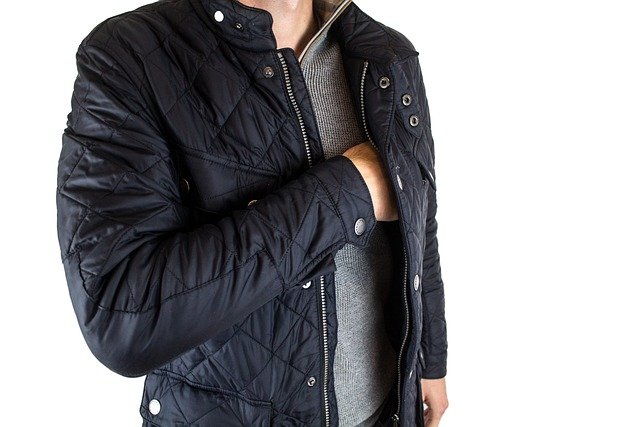Winter Jackets For Everyday Comfort And Style
Winter jackets come in many shapes and materials, from light puffers to heavy parkas, and each one helps keep you warm while looking good. This article explains the main types of winter jackets, what makes them different, and how they can be used in daily life. You will learn how simple details like fabric, length, and design can change the way a jacket feels and fits. With clear examples, this guide makes it easy to see why winter jackets are one of the most important pieces of clothing for the colder months and how they became part of everyday fashion.

Understanding Different Types of Winter Jackets
Winter jackets encompass a broad range of styles designed for various climates and activities. Puffer jackets feature quilted construction with down or synthetic insulation, providing excellent warmth-to-weight ratios. Parka-style jackets offer extended coverage with longer lengths and often include fur-trimmed or removable hoods. Wool coats blend traditional materials with modern cuts, delivering sophisticated appearances suitable for professional settings. Shell jackets prioritize weather protection through waterproof and windproof materials while allowing layering flexibility underneath.
Technical winter jackets incorporate specialized features like sealed seams, adjustable ventilation systems, and reinforced high-wear areas. These designs cater to outdoor enthusiasts who require reliable performance in extreme conditions. Fashion-forward winter jackets emphasize style elements while maintaining adequate warmth, featuring unique textures, colors, and silhouettes that complement various wardrobe aesthetics.
Mens Winter Jackets: Features and Considerations
Mens winter jackets typically emphasize durability, functionality, and versatile styling options. Popular designs include bomber-style jackets with ribbed cuffs and hemlines, providing casual sophistication suitable for weekend activities and social gatherings. Military-inspired field jackets incorporate multiple pockets, adjustable features, and robust construction methods that appeal to practical-minded consumers.
Contemporary mens winter jackets often feature streamlined silhouettes that layer well over business attire without adding excessive bulk. Materials range from traditional wool blends to innovative synthetic fabrics that offer superior moisture management and temperature regulation. Color palettes typically include neutral tones like navy, charcoal, olive, and black, ensuring compatibility with existing wardrobe pieces.
Sizing considerations for mens winter jackets include allowing adequate room for layering while maintaining a tailored appearance. Features like adjustable cuffs, drawstring waists, and removable components enhance versatility across different weather conditions and styling preferences.
Womens Winter Jackets: Style and Functionality Balance
Womens winter jackets demonstrate remarkable diversity in design approaches, from fitted silhouettes that accentuate natural curves to oversized styles that prioritize comfort and layering capabilities. Belted designs create defined waistlines while providing adjustable fit options. Asymmetrical zippers, unique collar treatments, and decorative hardware elements add visual interest without compromising functional performance.
Color options for womens winter jackets extend beyond traditional neutrals to include jewel tones, pastels, and bold patterns that serve as statement pieces within winter wardrobes. Faux fur trim, quilted textures, and mixed-material construction create varied aesthetic appeals while maintaining weather protection standards.
Length variations in womens winter jackets range from cropped styles that pair well with high-waisted bottoms to knee-length coats that provide comprehensive coverage. Hood designs, pocket configurations, and closure systems reflect both practical considerations and fashion preferences specific to women’s outerwear needs.
Stylish Winter Jackets: Trends and Design Elements
Stylish winter jackets incorporate current fashion trends while maintaining essential weather protection capabilities. Sustainable materials have gained prominence, with recycled polyester, responsibly-sourced down, and eco-friendly water-repellent treatments appealing to environmentally conscious consumers. Vintage-inspired designs referencing 1970s ski wear, 1980s technical aesthetics, and military surplus styling continue influencing contemporary winter jacket designs.
Color-blocking techniques, reflective accents, and oversized logos create bold visual statements that align with streetwear influences. Minimalist approaches emphasize clean lines, subtle branding, and premium material quality over flashy design elements. Convertible features like removable sleeves, reversible constructions, and modular components enhance versatility while reducing overall wardrobe needs.
Technological integrations include smartphone-compatible touch screen fingertips in attached gloves, built-in media player controls, and heating elements powered by rechargeable batteries. These innovations represent the intersection of fashion, function, and modern lifestyle requirements.
| Brand Category | Price Range | Key Features | Target Audience |
|---|---|---|---|
| Premium Designer | $400-$1,200 | Luxury materials, fashion-forward designs, limited production | Fashion-conscious consumers, professional settings |
| Outdoor Technical | $150-$500 | Weather protection, performance features, durability focus | Active lifestyle, outdoor enthusiasts |
| Mass Market Retail | $50-$200 | Affordable pricing, basic weather protection, trend-influenced styling | Budget-conscious shoppers, casual wear |
| Sustainable Options | $100-$400 | Eco-friendly materials, ethical production, innovative recycled content | Environmentally aware consumers |
Prices, rates, or cost estimates mentioned in this article are based on the latest available information but may change over time. Independent research is advised before making financial decisions.
Selecting Quality Winter Jackets for Long-term Use
Quality winter jackets demonstrate superior construction through reinforced stress points, durable hardware, and premium material selection. Down-filled options should specify fill power ratings, with higher numbers indicating better insulation efficiency per weight unit. Synthetic insulations perform better in wet conditions and maintain warmth even when damp, making them suitable for varied climate conditions.
Water resistance ratings, measured in millimeters, indicate fabric performance against moisture penetration. Breathability ratings ensure comfort during active use by allowing moisture vapor transfer while blocking external water. Seam construction methods, including taped, welded, or sealed techniques, significantly impact overall weather protection capabilities.
Care instructions and maintenance requirements affect long-term jacket performance and appearance retention. Understanding proper washing techniques, storage methods, and periodic treatments helps maximize investment value while maintaining optimal functionality throughout multiple seasons.
Winter jackets represent significant investments in personal comfort, style expression, and weather protection. Evaluating individual climate needs, lifestyle requirements, and aesthetic preferences guides appropriate selection processes. Quality construction, appropriate sizing, and versatile design features contribute to satisfying ownership experiences that justify initial purchase costs through extended use and consistent performance across various winter conditions.




